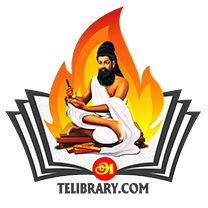

Indepedence from Britain

The island of Ceylon officially gained its independence on 4 February 1948
The island of Ceylon officially gained its independence on 4 February 1948 as a self-governing dominion within the British Commonwealth. Dominion status followed with military treaties with Britain, like the upper ranks of the armed forces were initially British (this was due to the continued influence of Britain over Ceylon’s military structure, as the country had been under British colonial rule for nearly 150 years, and the training and leadership positions were still largely British-led). British air and sea bases remained intact. The cabinet of Ceylon and Labour MP Patrick Gordon Walker of the Commonwealth Office watched as the Governor-General, Sir Henry Moore, was sworn in.
Services of thanksgiving were held in Buddhist and Hindu temples, Christian churches, and Muslim mosques. The lion flag of the old Sinhalese kings of Kandy, a symbol of Sinhala authority, was raised as the first prime minister, sixty-three-year-old rubber magnate Don Stephen Senanayake, went on the radio to express the hope that Britain’s voluntary renunciation of the colony was a seed which would grow into ‘a stately tree of mutual and perpetual friendship.
’ A gesture, however, seemingly insignificant at the time, nonetheless signified the Sinhalese majority’s readiness to consolidate control over the entire island, positioning Sinhala rule as central to the new state’s future, with little regard for the Tamil population’s political or cultural autonomy. The UNP was founded on 6 September 1946 through the amalgamation of three right-leaning pro-dominion parties representing the majority Sinhalese community, alongside members from the Tamil populations and other minorities.

It was established by Don Stephen Senanayake, who was at the forefront of the struggle for independence from the United Kingdom. In 1949, the UNP government amended the Parliamentary Elections Act, a move that specifically led to the disenfranchisement of Tamil plantation workers—many of whom had been brought in under indentured labor systems but were, in practice, subjected to conditions akin to slavery—as well as individuals of Indian and Pakistani ancestry. This amendment was a key part of the government’s broader strategy to remove voting rights from Tamils, consolidating power within the Sinhalese majority. Many Tamil plantation workers were deprived of citizenship, stripped of their nationality, and denied the right to vote in the newly independent state, where their families had lived for several generations.
This strategic move by Senanayake was aimed at securing the support of the Kandyan Sinhalese, who felt threatened by the growing Tamil presence on the tea estates. The inclusion of these Tamil workers in the electorate would have likely resulted in electoral defeat for the Kandyan leaders, thus reinforcing the Sinhalese majority’s political dominance. Tamil political leaders such as S. J. V. Chelvanayakam and his Tamil opposition party opposed this move. They recognized that Tamils, particularly those from the plantations, were the first community marked out for discrimination by the new state of Ceylon.
![]()
https://www.historytoday.com/archive/independence-day-ceylon
Hoole, M.R.R. (1988) Chapter1: Missed Opportunities and the Loss of Democracy.